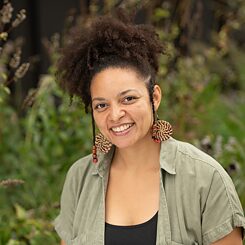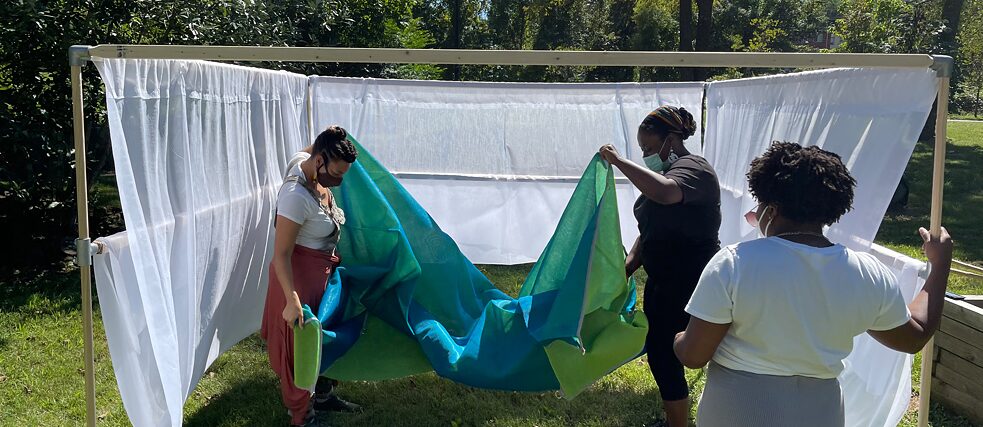Fugitive Sanctuaries is a process-based, community build that explores themes of Black fugitivity and marronage in historic sites of fugitive practice in Washington DC. Black fugitivity refers to practices in which enslaved Africans subverted the plantation through truancy, secret gatherings, harboring fugitives, creating networks of care, and beyond.
Washington DC holds a strong legacy of abolitionist and fugitive organizing. Fugitive Sanctuaries invites DC residents to consider these histories and how they can support Black-led, community-based organizing that is working towards abolition, community wellness, and community safety.
Informed by her Black American and Jewish ancestry, Valoris has designed and fabricated a modular structure inspired by the sukkah and the hush harbor, both of which are temporary structures built by community to hold space for spiritual gathering and reflection. During her fellowship, Valoris has workshopped ideas, prototyped the modular structure, activated it with community, and researched sites of fugitive legacies in DC. She has been getting feedback from peer practitioners during temporary activations, and visiting local institutions that archive Black histories of DC.
Over four performances from April-September 2022, Valoris will work with small teams of people to assemble the structure, activate it through story circles, song circles, art-making, and ritual performance, and deconstruct it following each activation. According to Valoris: "Something that's powerful about the sukkah and the hush harbor is that they are temporary spaces, and they require a collective to build. I think that's why it's a practice we keep coming back to — building something together, making it beautiful, inviting others in and breaking it down. And then doing it all over again. For me it embodies some of the questions that our movements for liberation are asking... what are we excavating? What are we building, and how are we building together? It is an ongoing practice of care and renewal."
About Jessica Valoris
 Photo: Imagine Photography
Jessica Valoris is a Washington DC based multidisciplinary installation artist. Inspired by Afrofuturism, metaphysics, and historical memory, Valoris builds installations and experiences that are sacred, intentional, and activated. Weaving together sound collage, painting, sculpture, and facilitated events, Valoris creates portals: immersive environments through which participants are invited to reconnect and conversate with personal and universal truths. Informed by her Black American and Jewish ancestry, Valoris holds an emphatically multidimensional worldview which is reflected in her vividly eclectic visuals and dynamic installations. Using art as a catalyst for collective healing, Valoris affirms the joy and vitality of Black people, complicating flattened histories of oppression, and creating space for affirmative celebration and re-definition. Valoris values collaboration with community-based organizations and cultural workers, and her work is a tool, resource, and space for culturally-relevant wellness and resilience.
Photo: Imagine Photography
Jessica Valoris is a Washington DC based multidisciplinary installation artist. Inspired by Afrofuturism, metaphysics, and historical memory, Valoris builds installations and experiences that are sacred, intentional, and activated. Weaving together sound collage, painting, sculpture, and facilitated events, Valoris creates portals: immersive environments through which participants are invited to reconnect and conversate with personal and universal truths. Informed by her Black American and Jewish ancestry, Valoris holds an emphatically multidimensional worldview which is reflected in her vividly eclectic visuals and dynamic installations. Using art as a catalyst for collective healing, Valoris affirms the joy and vitality of Black people, complicating flattened histories of oppression, and creating space for affirmative celebration and re-definition. Valoris values collaboration with community-based organizations and cultural workers, and her work is a tool, resource, and space for culturally-relevant wellness and resilience.
